
* From the early 1940s, Stanley Hiller developed a series of experimental helicopters, leading to the production "Hiller UH-12" piston helicopter, which proved popular both in military and civil service. The Hiller firm, as a division of Fairchild, later developed a pioneering turbine helicopter, the "FH-1100", though it did not prove as popular.
In the 1960s, the Hughes company introduced a series of piston light helicopters comparable to the Hiller UH-60, beginning with the Hughes "Model 269", leading to the popular "Model 300" and its derivatives, manufacturing changing hands a number of times, the series proving very popular for training. The Hughes 300 led in turn to the modernized "Model 330" and its derivatives. This document provides a history and description of the Hiller UH-12, Fairchild-Hiller FH-1100, and Hughes 300 families. A list of illustration credits is included at the end.
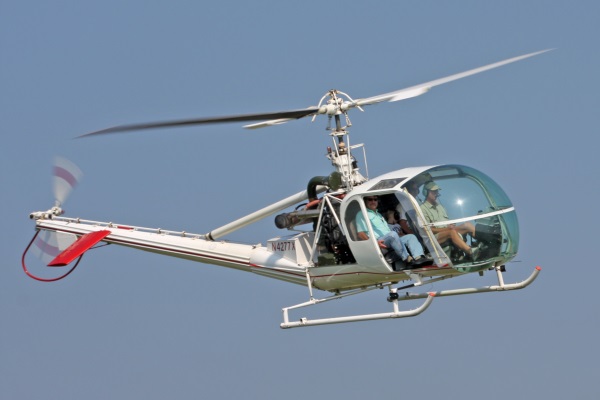
* Stanley Hiller of California was the "boy genius" of helicopters, going into business for himself at age 16 just before the US entered World War II, his "Hiller Industries" firm building small gasoline-powered model cars. This business proved successful and expanded when the war came, with Hiller producing aircraft parts as a subcontractor to major US aircraft firms.
As a sideline, Hiller began to investigate helicopter design, having followed the pioneering work of Igor Sikorsky and others elsewhere. In 1942, Hiller set up a new firm, "Hiller Aircraft", in Stanford, California, to focus on helicopter development, though wartime shortages made his work difficult -- the military had first call on all aircraft engine production, and Hiller had to lobby the government just to be allowed to buy one. In July 1944, when Hiller was 19, he flew the "XH-44", the first successful American coaxial helicopter. It featured a "rigid-rotor" scheme, in which the rotors were rigidly connected, not hinged, to the rotor hub; and was one of the first helicopters to have all-metal, instead of wooden, rotor blades.
After refining the design and flying it in public demonstrations, Hiller was able to attract interest from the big Kaiser company, which acquired the Hiller Aircraft company. Hiller then went on to develop a more powerful, two-seat derivative of the XH-44, the "X-2-235", with three prototypes built. By that time, Hiller was determined to go to full helicopter production -- but found Kaiser unwilling to commit the necessary funds. The Hiller company went independent again, the "divorce" from Kaiser being amicable, with the new independent organization named "United Helicopters".
Now on his own again, Hiller developed the "J-5", which was a crude demonstrator for what would later be called a "no tail rotor (NOTAR)" helicopter. Instead of coaxial rotors, the X-5 had a single three-blade main rotor, with the engine driving a fan through a tail duct to a vent in the rear to cancel torque. Although two more "NC-5" demonstrators along such lines were built, they didn't fly well, mostly due to lack of engine power, with NOTAR then being put off to a later generation.
More constructively, Hiller developed the two-seat "UH-4 Commuter", a further refinement of the coaxial-rotor XH-44, with the UH-4 publicly unveiled in 1947 and three prototypes flown. As its name implied, it was intended for the consumer market -- the assumption at the time being there would be postwar boom in private aviation, and in private helicopter use in particular. Hiller soon realized that the private helicopter market was not going to materialize in the near future, and decided to focus on the commercial-agricultural market instead.
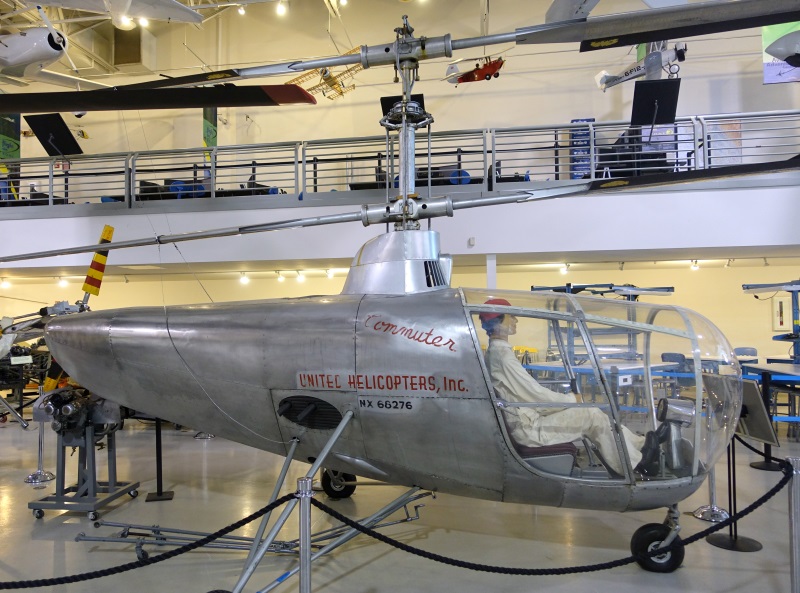
The UH-4 wasn't a complete loss, since it had enhanced the skills of the Hiller company team, and brought Hiller a degree of public recognition. For the company's next effort, conversations over the poor controllability of the NC-5 demonstrators led to a new control scheme that Hiller had sketched out in 1940 -- which would emerge as the "Rotormatic" cyclic control system. This involved use of a set of airfoils, or "paddles", mounted above and at a right angle to the twin-blade rotor. The cyclic control stick adjusted the paddles, which in turn adjusted the main rotors. The scheme was simpler and cheaper than adjustments of the rotor blades themselves; it required less force and minimized vibrations on the control stick, a major problem with early helicopters.
An NC-5 demonstrator was modified to evaluate the Rotormatic scheme, the new demonstrator being designated the "UH-5". It eliminated the coaxial rotor scheme, using a two-blade rotor and the Rotormatic paddles, with a two-blade tail rotor to cancel torque. The UH-5 proved all that was hoped of it, being extraordinarily controllable compared to earlier helicopters; it could hover stably, even with the pilot's hands off the controls, and was very easy to fly. It was something of a leap for Hiller to give up on coaxial rotors, but tests showed the Rotormatic paddles did not work well with the coaxial configuration; the single-rotor machine with the paddles was clearly superior to everything Hiller had done before.
Hiller, now having got the formula right, began work on a prototype, the "Hiller 360X", to pave the way for a production machine, while acquiring facilities for mass production. First flight of the 360X was on 11 November 1947. This machine had a fully enclosed body, essentially a carry-over from the thinking of a helicopter as a personal flying car; three more "Model 360" pre-production machines followed, of much more spare configuration.
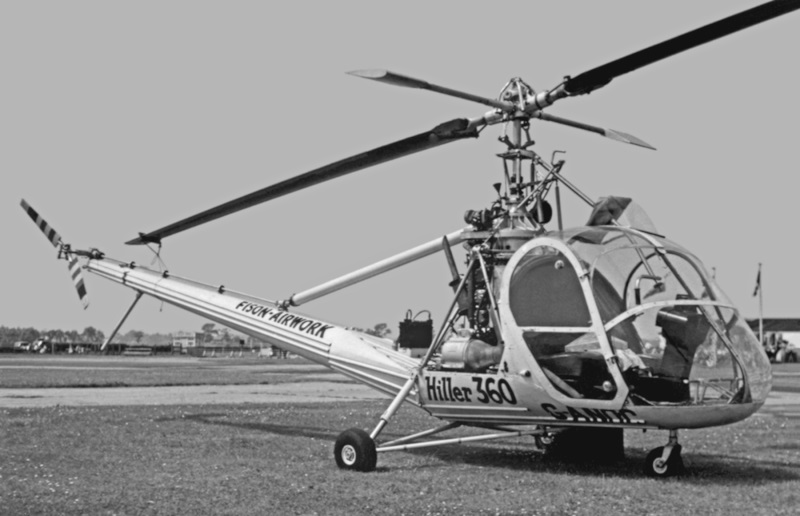
Trying to scrounge up funding for production was troublesome. Fortunately, Hiller was not only a brilliant inventor, he was at least as good a businessman, with the case for his product greatly assisted by a trans-continental tour of the Model 360. The first production delivery of a Model 360 -- or "UH-12" as it was more formally known -- was on 1 March 1949. It cost about $20,000 USD -- roughly twice as much as a Beech Bonanza, but a real bargain for a helicopter.
BACK_TO_TOP* The UH-12 had some broad similarities to the contemporary Bell 47 helicopter -- suggesting a dragonfly, with a framed plexiglass cockpit featuring a sloped windshield and removeable forward-hinged doors on each side; exposed engine and drive system; and a two-blade main propeller made of wood. Hiller had wanted metal main rotor blades, but ran into snags, though the tail rotor was made of metal. It differed in having three-across seating instead of twin seats; fixed tricycle landing gear, all with single wheels, the main gear on tripod mountings; and having the two-blade tail rotor mounted on an upraised "stinger" tailboom, enhancing its insectlike appearance.
At the outset, the tail rotor was on the left, with a matching tailplane on the right, and a rod for a tail rotor guard under the tailboom. It was powered by a 130 kW (175 HP) Franklin 6V4-178-B33 flat-six air-cooled engine; drive to the tail rotor was fed through a strut that also held up the tailboom. One innovative feature was an overhead control stick, linked directly to the Rotormatic paddles. The UH-12 was noted for its stability, but it came at a price: there was a noticeable lag in control response, one pilot saying with a bit of exaggeration that one could eat a sandwich before the machine responded to a control adjustment.
* The UH-12 led to the "UH-12A", introduced in 1950; it featured improved rotor blades and max take-off weight increased by about 7%. With the beginning of the Korean War in June 1950, the military became interested in using helicopters for medical evacuation. In September 1950, the Army began tests of a UH-12A with enclosed side-mounted litter carriers and fitted with military radios, giving the type the designation "YH-23". The type went into production as the H-23A "Raven", with the Navy also ordering a number of dual-control trainers with the designation "HTE-1".
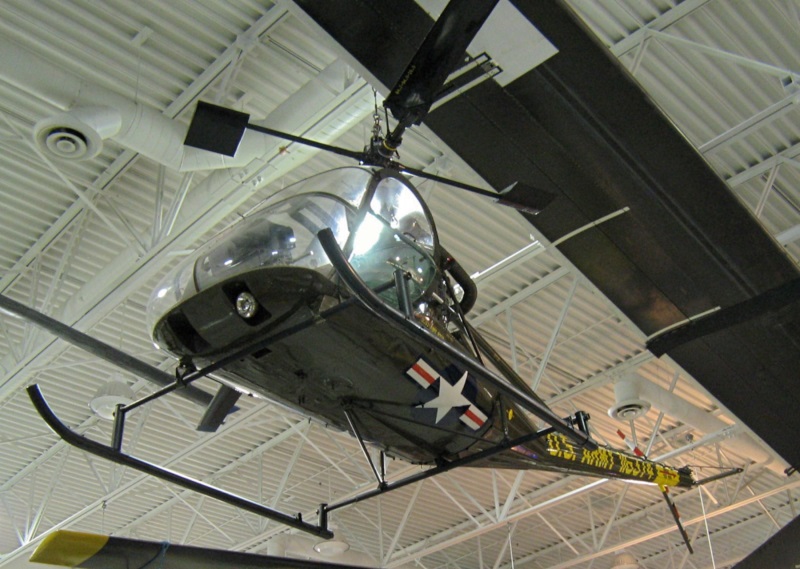
At first, the H-23 proved unsatisfactory in combat service, its performance and reliability leaving something to be desired, the H-23 being well overshadowed by the Bell Model 47 in the war theater. Part of the problem was that Bell understood military requirements better than the Hiller company, indeed better than the Army; although the Army had made no strong demands on Bell for field service support, Bell made sure a corps of service people were in Korea to keep their helicopters flying. The Army didn't encourage the Hiller company to do so, and company staff didn't think of doing so until the problem became obvious.
Hiller engineers focused on fixing the problems, resulting in 1951 in the "UH-12B" AKA "H-23B" for the US Army -- featuring a Franklin 6V4-200-C33 engine with 150 kW (200 HP), skid or float landing gear, and a more robust airframe, with MTO weight raised another 4%. The Army found the H-23B more satisfactory than the H-23A and was enthusiastic about it. A batch of trainers with four-wheel landing gear replacing the skids was built for the US Navy as the "HTE-2", but those were the last production Hiller helicopters the Navy would buy for a decade. The Hiller company had hired in a number of people from Convair who didn't realize they no longer had as strong a bargaining position with customers as they had at Convair; they antagonized the Navy, with Navy officials deciding to take their business elsewhere. The fiasco led to a little house-cleaning at Hiller. A batch of HTE-2 helicopters did end up in the hands of the British Royal Navy as the "HT-1".
By this time, the company name had reverted to "Hiller Helicopters". With production capacity adequate to meet military requirements, the company was able to begin commercial sales of the UH-12B in 1952. In that year, the Hiller company introduced the "UH-12C" AKA Army "H-23C", which featured a spherical "bubble" cockpit that had more volume plus better field of view, along with a redesigned, smaller instrument panel.
* The next year, the UH-12C led to the much improved "UH-12D" AKA "H-23D" -- though it should be noted that the UH-12D was never sold commercially, and so strictly speaking the variant was only the "H-23D". It looked much like the UH-12C, but it was substantially re-engineered, in particular featuring a transmission and drive system with a time between overhauls of an unprecedented 1,000 hours. The time for earlier UH-12 variants was 300 hours at best. It was powered by a Lycoming VO-435-A1C flat-six air-cooled engine with 185 kW (250 HP), raising MTO again, this time by 10%. One recognition feature was that the tail rotor and tailplane switched sides, the tail rotor ending up on the left side of the tail, to eliminate vibration that would crop up in some circumstances. The Army was enthusiastic.
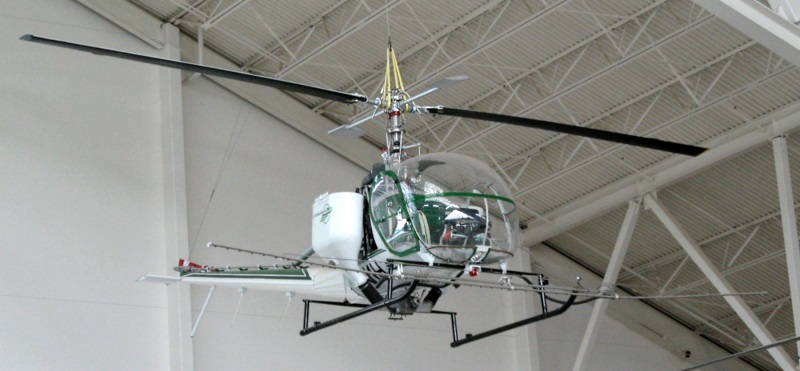
The UH-12D led in turn to the "UH-12E" AKA "OH-23G" -- the "OH" signifying "observation helicopter", this change dating from 1961, all the older Hiller machines in Army service getting an "O" suffix as well. The primary change was fit of a Lycoming VO-540 engine flat-six air-cooled engine with 225 kW (305 HP), with MTO again raised by about 10%; lack of power was no longer an issue with the UH-12, it was now able to haul up to 450 kilograms (1,000 pounds) as a sling load. Engine options included a supercharger to maintain performance up to 6,100 meters (20,000 feet). The OH-23G was specifically a dual-control trainer. The Canadian Army bought 22 UH-12E helicopters and designated them "CH-112".
___________________________________________________________________
HILLER UH-12E:
___________________________________________________________________
main rotor diameter:
10.8 meters (35 feet 5 inches)
tail rotor diameter:
1.68 meters (5 feet 6 inches)
fuselage length:
8.69 meters (28 feet 6 inches)
footprint length:
12.41 meters (40 feet 8 inches)
height (rotor head):
3.08 meters (10 feet 1 inch)
empty weight:
798 kilograms (1,759 pounds)
max operating weight:
1,406 kilograms (3,100 pounds)
cruise speed:
145 KPH (90 MPH / 80 KT)
service ceiling:
4,570 meters (15,000 feet)
hover ceiling (in ground effect):
3,170 meters (10,400 feet)
hover ceiling (out of ground effect):
2,070 meters (6,800 feet)
range:
280 kilometers (175 MI / 150 NMI)
___________________________________________________________________
In 1960, the UH-12E's cockpit was "stretched" by 64 centimeters (25 inches) to result in the "UH-12E4" AKA "OH-23F", the "4" in the civil designation meaning "four seats" -- pilot forward, three on a bench seat in the rear. Dual tailplanes were added in a shallow "inverted vee" on the tailboom. The original UH-12E was then redesignated "UH-12E3" to emphasize the three seats, but it doesn't appear this redesignation stuck.
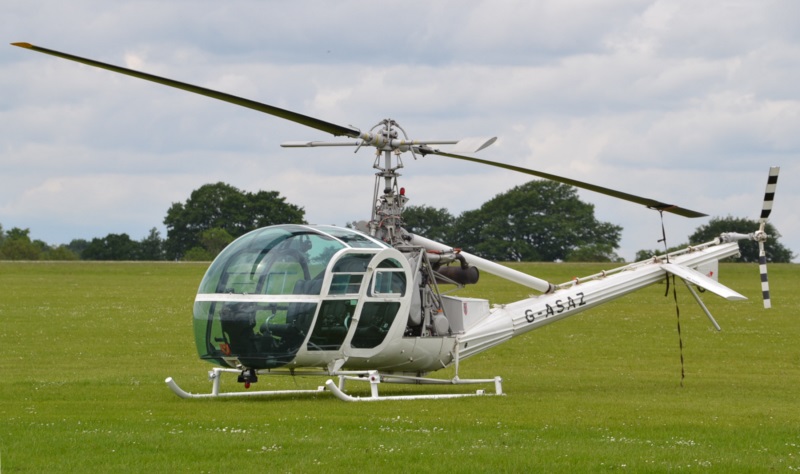
In 1963, the Hiller company introduced a new "L" rotor system that eliminated the Rotormatic paddles and provided better flight characteristics; the UH-12E was updated with the "L" rotor in 1963 to become the "UH-12E-L". The UH-12E-L was redesignated the "Hiller L3" in 1964, with the UH-12E4 then updated with the "L" rotor as the "Hiller L4". They were offered with supercharged engines as the "SL3" and "SL4" respectively. The "L" rotor system would not prove popular, its advantages not outweighing its greater cost, and the UH-12E would persist as the main production item. Over 2,000 UH-12-series helicopters would be built in all, and many are still flying, mostly in the cropduster role.
BACK_TO_TOP* By the end of the 1950s, it was apparent the UH-12 had little room left for further evolution, with Stan Hiller considering where else to go in rotorcraft. There were experimental fits of turbine powerplants to the UH-12; Hiller didn't go to production with them, though the idea wasn't completely abandoned. In 1961, the Hiller company flew a prototype of the "Model 1099", a boxy six-place utility helicopter; it had maximum take-off weight of 1,590 kilograms (3,500 pounds), including 450 kilograms (1,000 pounds) of payload, and was powered by a Pratt & Whitney Canada (PWC) PT6 turboshaft with 375 kW (500 HP). The "Ten99", as it was called, was developed with an eye towards sales to the US Marines. The Marines adopted the Bell UH-1 instead, and the "Ten99" never went into production.
However, in 1960 the US Army had announced a "Light Observation Helicopter (LOH)" competition, with a prospect of large numbers of sales by the winner. The rotorcraft was to have four seats and be powered by a single turboshaft engine. Twelve companies submitted proposals, with three selected for further consideration:
The Army ordered prototypes of the three offerings for evaluation, with all to be powered by the Allison T63 turboshaft. Flight tests began in 1963, with the Bell OH-4A quickly eliminated from the competition as too expensive and less capable. The Hiller OH-5A seemed poised to win, being superior to the Hughes OH-6A in most respects -- but the reclusive Howard Hughes, boss of Hughes Helicopters, was determined to win, lobbying procurement personnel with "babes, booze, and bribes", and then recklessly underbidding the price of the OH-6A. Much to the disgust of Stan Hiller, the OH-6A won the award.
* In 1964, Hiller Helicopters was bought out by Fairchild to result in the Fairchild-Hiller Company, with Stan Hiller as vice-president. Fairchild-Hiller decided to commercially produce the Model 1100 as the "FH-1100", certification being granted in 1964.
The FH-1100 was a very clean helicopter, state of the art for the time, of main-tail rotor configuration, using the L-type rotor, and powered by a single Allison 250-C20B turboshaft providing 315 kW (420 SHP), this engine being the civil version of the military T63. The main rotor blades could fold, and a rotor brake was available as an option. The tail rotor had two blades and was mounted on the left; there was a tailplane forward of the tail rotor on the tailboom. Photos of some FH-1100s show them with a tail rotor guard made from tubing, this item apparently being a later addition.
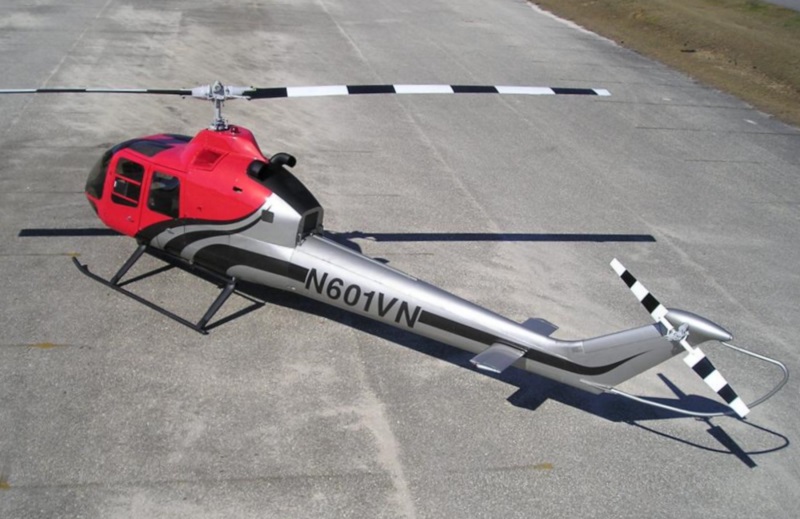
The FH-1100 featured skid landing gear; a float system was also introduced. It could carry a pilot, copilot, and three passengers; or a pilot and four passengers. In the air ambulance role, it could fit two stretchers and an attendant, in addition to the pilot. There were dual forward-hinged doors on both sides of the fuselage -- the left rear door on the air ambulance version was rear-hinged to provide a double-door for loading stretchers. There was a baggage compartment in the rear of the cabin, with the door on the left.
___________________________________________________________________
FAIRCHILD-HILLER FH-1100:
___________________________________________________________________
main rotor diameter:
10.79 meters (35 feet 5 inches)
tail rotor diameter:
1.83 meters (6 feet)
fuselage length:
9.08 meters (29 feet 10 inches)
footprint length:
12.13 meters (39 feet 10 inches)
height (rotor head):
2.83 meters (9 feet 4 inches)
empty weight:
635 kilograms (1,395 pounds)
max take-off weight:
1,245 kilograms (2,750 pounds)
max cruise speed:
205 KPH (125 MPH / 110 KT)
service ceiling:
4,325 meters (14,200 feet)
hover ceiling (in ground effect):
4,085 meters (13,400 feet)
hover ceiling (out of ground effect):
2,560 meters (8,400 feet)
range:
560 kilometers (350 MI / 305 NMI)
___________________________________________________________________
* In the meantime, Hughes Helicopters had been building the OH-6A for the Army, with the type giving a good account of itself in the Vietnam War. However, having wildly underbid costs on the machine, Howard Hughes was losing a good deal of money on each OH-6A delivered. After the initial production batch had been delivered, the Army ordered follow-on production, with Hughes then almost tripling the price. That attracted the attention of Congress.
The Army responded to the drastic price increase by pointing out a clause in the contract that allowed the service to continue buying OH-6As at the original price; Howard Hughes was forced to back down, but production of OH-6As at Hughes Aircraft slowed to a crawl. Congress then intervened, stipulating that the Army cancel the contract with Hughes Helicopters and re-start the LOH competition.
Stan Hiller had foreseen that would happen, and felt the FH-1100 would then get the Army's business -- but he had left Fairchild-Hiller in 1965, to end up a highly-regarded corporate troubleshooter, adept at fixing companies in trouble. Fairchild-Hiller President Frederick Ulf, disgusted at the way the first round of the LOH competition had gone, simply refused to re-submit the FH-1100. Bell submitted the "OH-58", a heavily redesigned derivative of the inadequate OH-4A, and won by default of being the only contender. The OH-58 would prove very successful, not only in military service, but also in commercial use as the well-known JetRanger.
The FH-1100, which was cheaper, would have otherwise won the LOH competition, with major production contracts for Fairchild-Hiller. That blunder would prove a big step towards the bankruptcy of the firm in the 1980s. Production of the FH-1100 ended in 1974, with 254 rotorcraft, including prototypes, built to that time. Most were sold to commercial users, but a few ended up in foreign military hands as utility machines.
* Hiller helicopters did not disappear from the scene. The helicopter operation was passed on to Rogerson Aircraft, and eventually, in 1994, was reclaimed by Stanley Hiller's son, backed by a group of Thai investors. The revitalized Hiller company sells refurbished UH-12 rotorcraft, including "UH-12ET" turbine conversions, powered by the Allison 250-C20B turboshaft. Some sources claim that Hiller Aircraft has also sold a number of new-build UH-12 machines.
The modern Hiller company does not deal with the FH-1100, rights to that having been passed on to the FH1100 Manufacturing firm -- which is focused on rebuilds, though apparently noises have been made about new-build rotorcraft. FH1100 Manufacturing offers an armed version of the FH-1100, with stub wings for four TOW anti-armor missiles or other munitions, but it is unclear if anyone has bought FH-1100s in an armed configuration.
BACK_TO_TOP* In 1955 the Hughes Tool Company's Aircraft Division, later Hughes Helicopters, concluded from market studies that there was a market for a low-cost, lightweight utility helicopter, the popular notion at the time being that "personal helicopters" were going to become commonplace. Although the only helicopter developed by Hughes to that time was the huge "XH-17" -- a clumsy monster of a rotorcraft that was supposed to straddle-carry tanks and the like, that exercise going nowhere -- the company decided to proceed on development of the lightweight machine, with development conducted by an engineering team under Fred C. Strible. They leverage the rotor system design off the experimental McCulloch "MC-4" tandem-rotor helicopter, which never entered production.
A prototype of the two-seat "Model 269" helicopter performed its initial flight on 2 October 1956, with test pilot Gale Moore at the controls. This machine was powered by a Lycoming O-360A flat-four air-cooled piston engine, providing 135 kW (180 HP). A second prototype was flown, leading to development of the production-standard "Model 269A" helicopter, the second Hughes 269 prototype being modified to that standard. The US Army evaluated five Hughes 269A machines in 1957 and 1958 under the designation of "YHO-2-HU" as observation helicopters; the Army was impressed, but the program was canceled due to budget cuts, and no orders were forthcoming.
However, the Hughes 269 was certificated by the US Federal Aviation Administration (FAA) in 1959, to go into production in 1960, with first customer deliveries in 1961. The Hughes 269 seemed to be a throwback to the helicopters of a decade earlier, such as the Bell Model 47 and Hiller 360, and like them somewhat insectlike. It was a minimalist rotorcraft, of conventional main-tail rotor configuration, with a three-bladed main rotor and a two-bladed tail rotor. It featured:
Several hundred Hughes 269 helicopters were built for civil and foreign military users. The US Army wasn't done with the Hughes 269A by any means, evaluating it in 1964 for the helicopter primary training role; it was then adopted by the Army as the "TH-55A Osage", after the Osage native tribe, with 792 obtained. The TH-55As remained in service to 1988.
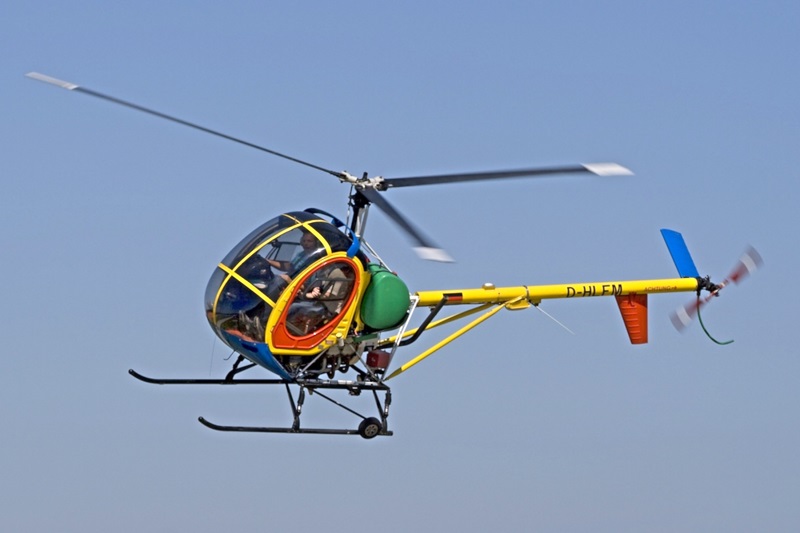
The Japanese Ground Self Defense Forces also obtained 38 similar "TH-55J" trainers, assembled in Nippon by Kawasaki. Hughes Helicopters then developed the "Model 269A-1" AKA "Model 200", which featured modest improvements, being sold in simple "Utility" configuration and a "Deluxe" configuration with refined trim.
BACK_TO_TOP* In late 1963, Hughes Helicopters introduced the "Model 269B" AKA "Model 300", which was externally much the same as the Hughes 269A, but which featured a rearranged internal cockpit arrangement that could fit three people instead of two, with a bench seat replacing the twin seats of the earlier variant. It seems that carrying three was awkward if dual controls were fitted. The cockpit form-factor itself was not altered. The Hughes 300 was powered by a Lycoming HIO-360-AIA engine providing 140 kW (190 HP).
Unlike the Hughes 269A, the Hughes 300 was offered with twin floats as an option. It was also sold in a stripped-down utility configuration, typically with a single seat, as the "Model 280U", and as the "Model 300AG" for crop-spraying, with twin chemical tanks and booms to each side of the rotorcraft. In 1967, a new "quiet" tail rotor was introduced into production, with the machine then becoming the "Hughes 300B", with the quiet tail rotor also available for retrofit to older machines.
Hundreds of Hughes 300 helicopters were built, with Breda Nardi of Italy performing license construction of the type as the "NH-300" from 1969. In 1970, Hughes introduced the definitive "Model 269C" AKA "Model 300C", the primary change being a rotor increased in diameter from 7.71 meters (25 feet 3 inches) to 8.18 meters (26 feet 10 inches), providing substantially increased lift capacity. The tailboom was extended appropriately to provide clearance for the tail rotor; the tailfin was also larger and trapezoidal, not triangular, in shape, providing a recognition feature. The helicopter was powered by a Lycoming HIO-360-D1A engine, with technical improvements, but still rated at 140 KW (190 HP).
___________________________________________________________________
HUGHES 300:
___________________________________________________________________
main rotor diameter:
8.18 meters (26 feet 10 inches)
tail rotor diameter:
1.3 meters (4 feet 3 inches)
fuselage length:
6.76 meters (22 feet 2 inches)
footprint length:
9.4 meters (30 feet 10 inches)
height (rotor head):
2.66 meters (8 feet 9 inches)
empty weight:
475 kilograms (1,050 pounds)
max take-off weight:
975 kilograms (2,150 pounds)
max cruise speed:
155 KPH (95 MPH / 85 KT)
service ceiling:
3,110 meters (10,200 feet)
hover ceiling (in ground effect):
1,800 meters (5,900 feet)
hover ceiling (out of ground effect):
840 meters (2,750 feet)
range:
360 kilometers (225 MI / 195 NMI)
___________________________________________________________________
A police version -- with web seats, loudspeaker, searchlight, and other kit -- was sold as the "Model 300C Sky Knight"; a military trainer version for export sales was sold as the "TH-300C". Sweden was a buyer, designating theirs the "HKP-5". Incidentally, sources say the Army obtained 30 Hughes 300C helicopters, presumably as attrition replacements for TH-55A machines, though few specifics are available.
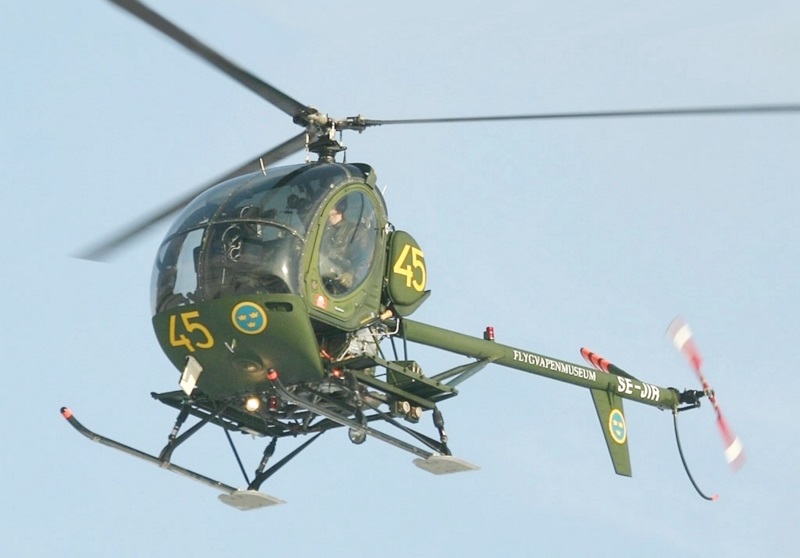
* In 1983, the Schweizer firm began to build the Model 300C under license from Hughes. In 1984, McDonnell-Douglas (MDD) purchased Hughes Helicopters, which became the "MD Helicopter" division of MDD. In 1986, Schweizer purchased full rights for the Model 300C from MDD, with the type becoming the "Schweizer 300".
In 1993, Schweizer introduced a refined basic machine for training, designated the "Model 300CB", with dual controls standard; followed by the "Model 300CBi", with a fuel-injected engine. In 1996, Kawada of Japan introduced a drone version of the Schweizer 300 named the "Robo-Copter", it seems primarily for crop-spraying -- small drone helicopters often being used in that role in Japan.
Schweizer was bought up by Sikorsky in 2004, Sikorsky officials wanting to add a low-end product line to their rotorcraft offerings; the Schweizer name was retained as a division title for a few years, but then abandoned -- and so the Model 300 became the "Sikorsky S300".
In 2011, Sikorsky publicly announced work on an S300 modified to fly under electric power, featuring large lithium battery packs slung on the sides. This machine was named the "Firefly"; nothing more was heard of the project, and it was apparently abandoned. The last S300s were delivered in 2014. However, in 2011, AVIC of China flew a prototype "AC310" light helicopter; except for a slightly pointed cockpit bubble, it was an effective copy of the S300, having been built with Sikorsky assistance. However, nothing more has been said of this exercise.
BACK_TO_TOP* In 1987, Schweizer began work on an advanced derivative of the Model 300, the "Schweizer Model 330", known internally as the "Model 269D". It was powered by an Allison 250-C10A turboshaft engine, providing 150 kW (200 SHP), and with a full fuselage. Initial flight of the prototype, converted from a Model 300, was on 14 June 1988, with certification in 1992 and deliveries the next year.
The size and general configuration of the Model 330 was similar to that of the Model 300, but the appearance was much more modern -- though the initial Model 330 prototype was in something of a halfway configuration, retaining the Model 300 tailboom assembly. The Model 330 could seat four. There were top and bottom tailfins at the end of the tailboom, plus a full tailplane with endplates forward on the boom.
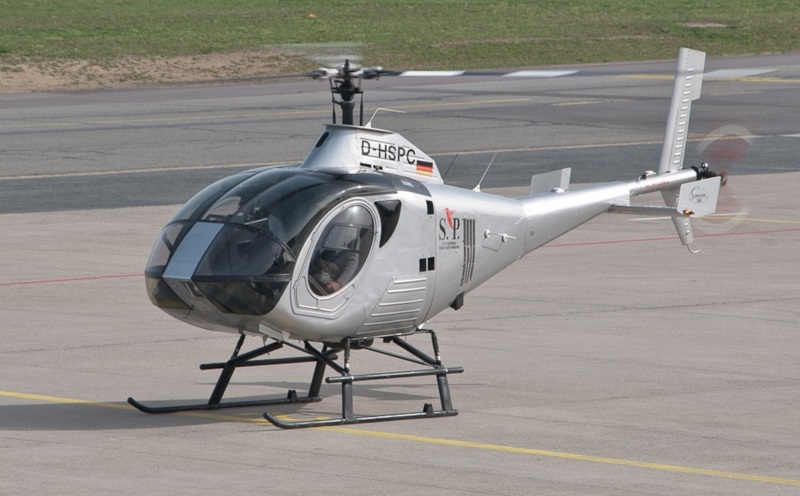
A "Model 330SP" was introduced in 1997, featuring improvements to the rotor system and raised landing gear; the changes could be retrofitted to older Model 330 rotorcraft. A "Model 333" was then introduced in 2000, featuring a new and wider rotor, plus a higher transmission power rating, permitting a substantial increment in useful load. The Model 330/333 didn't prove wildly popular, with only 72 built to final production in 2008.
___________________________________________________________________
SIKORSKY S-333:
___________________________________________________________________
main rotor diameter:
8.38 meters (27 feet 6 inches)
tail rotor diameter:
1.3 meters (4 feet 3 inches)
fuselage length:
6.82 meters (22 feet 4 inches)
footprint length:
9.5 meters (31 feet 2 inches)
height:
3.35 meters (11 feet)
empty weight:
550 kilograms (1,210 pounds)
max take-off weight:
1,115 kilograms (2,460 pounds)
cruise speed:
175 KPH (110 MPH / 95 KT)
service ceiling:
3,960 meters (13,000 feet)
hover ceiling (in ground effect):
3,750 meters (12,300 feet)
hover ceiling (out of ground effect):
2,835 meters (9,200 feet)
range:
590 kilometers (365 MI / 320 NMI)
___________________________________________________________________
* However, that wasn't the end of the matter. In response to a US Navy requirement for a "vertical take-off & landing (VTOL)" drone, Bell, Sikorsky, and a collaboration of the Ryan division of Northrop Grumman and Schweizer submitted designs, with the Ryan-Schweizer drone was selected as the winner in 2000. The "RQ-8A Fire Scout", as it was named, was a derivative of the Model 333, with a new fuselage, new fuel system, plus drone electronics and sensors.
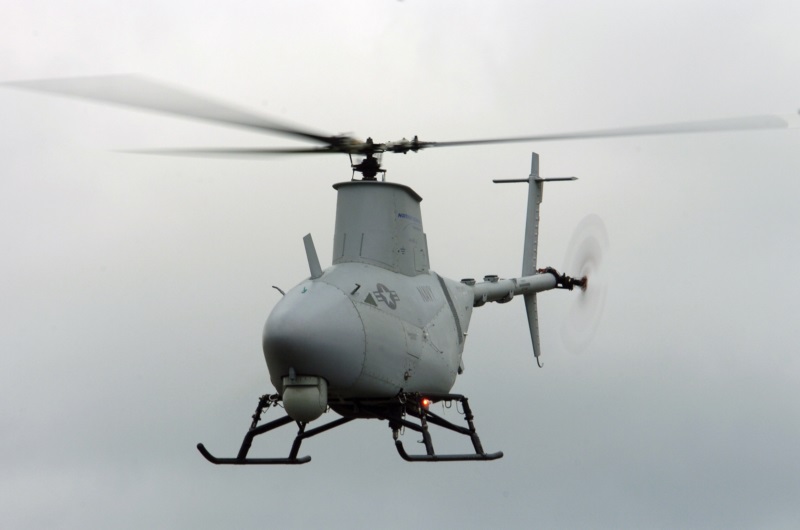
The initial prototype of the Fire Scout was piloted in early tests, flying autonomously for the first time in January 2000. The Fire Scout was to be fitted with a sensor ball turret with electro-optic and infrared cameras and a laser rangefinder, and was to be controlled over a data link derived from the Northrop Grumman Global Hawk drone. The Fire Scout program seemed to get off to an uncertain start, a prototype crashing in 2000 and a decision to cut funding for production in late 2001. However, development continued, and Northrop Grumman pitched a range of improved configurations to anyone who was interested.
As it turned out, the US Army was very interested, awarding a contract for seven improved "MQ-8B" evaluation machines in late 2003. The MQ-8B featured a four-blade main rotor with swept tips, in contrast to the larger-diameter three-blade rotors of the RQ-8A, with the new rotors reducing noise while providing improved lift capacity and performance. The four-blade rotors had already been evaluated on Fire Scout prototypes. The MQ-8B was fitted with stub wings as well. The wings served an aerodynamic purpose, but their primary use was for carrying external stores. A variety of sensor payloads was envisioned.
The Army Fire Scout program was given the budget axe in 2010, but the Navy had become interested again, with the Navy ordering eight MQ-8B derivatives for evaluation and committing to full production. The naval MQ-8B had shipboard recovery gear, and was evaluated with payloads such as communications relays. The Navy acquired a total of 23 MQ-8B drones up to 2014 -- but in 2011, the Navy decided that the MQ-8B was simply not big enough for the mission, and decided to move on to a more capable "MQ-8C", based on the Bell Model 407 helicopter, a refined descendant of the Jetranger. The mission system for the MQ-8B was ported to the MQ-8C.
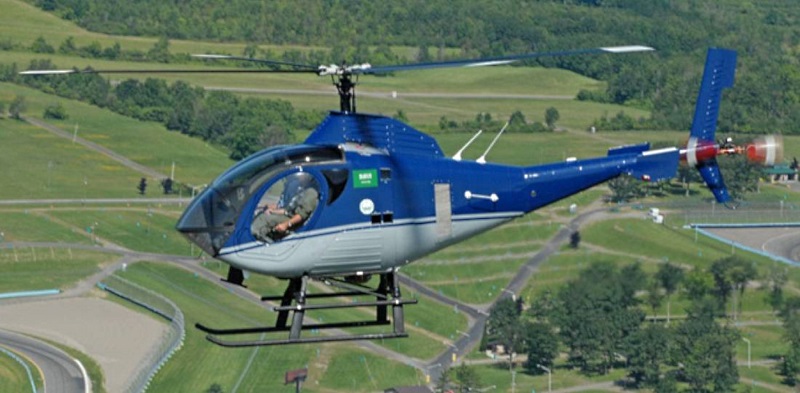
The exercise proved useful for Sikorsky, however, with the company developing a new derivative of the Model 330, the "S-434", most notably featuring the new four-blade rotor. Initial flight of the prototype was on 18 December 2008, with initial production deliveries in 2009. Unfortunately, sales didn't match the company's investment in the product line, and in 2015 Sikorsky decided to close down production. The product line was sold to a company named "Schweizer RSG" in 2018, which restarted manufacture of the Schweitzer 300C and 300CBi, shipping helicopters from 2021. The company has since gone on to offer the Schweizer 333m, and is considering technical improvements to its product line.
BACK_TO_TOP* Stan Hiller designed a number of innovative experimental rotorcraft, too diverse to consider in detail here. One of the more interesting was "HJ-1 Hornet", with three built, the first flown in 1950. It was an ultralight two-seat "tipjet" helicopter, and powered by small ramjets at the tips of a two-blade rotor. Hiller was attracted to the simplicity of the tipjet scheme, ramjets being little more than "flying stovepipes"; they have to be moving before they can be fired up, with the Hornet using an electric motor to spin up the rotor first. A tipjet machine also didn't need a tail rotor to neutralize torque.
The HJ-1 promised to be very cheap, Hiller announcing he could sell a production machine for $5,000 USD. It did, however, have very limited range, and was painfully noisy; another drawback was that "autorotation" -- the ability of a helicopter to get back down on the ground from the spinning of the rotor after engine failure -- was dangerously tricky, the dead ramjets slowing down the rotor RPM.
The onset of the Korean War sidetracked plans for commercial sales of the HJ-1, but the military was interested, with Hiller building a total of 25 improved Hornets for the Army and Navy as the "YH-32" and "HOE-1" respectively, initial deliveries being in 1953. These were substantially larger than the original Hornets, and had skid instead of wheeled landing gear; they also actually had a tail rotor of sorts, with a single blade and mounted on the side of the tailboom, just for yaw control.
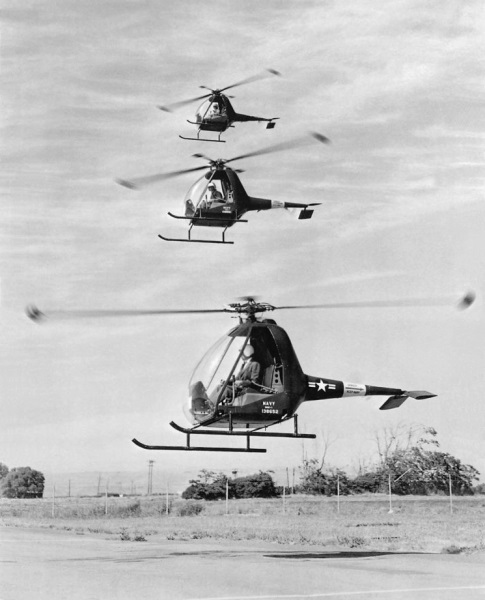
The last three Army YH-32s were obtained as "Ultra-Light Vehicles (ULV)", with no fuselage, and were used for weapons experiments with rockets, wire-guided missiles, recoilless rifles, mine detectors, and other kit. However, the military never saw the Hornet, with its limited range and small size, as much more than an experimental toy. Hiller tried re-engining the Hornet with small turbofans, and also considered the design of larger tipjet helicopters -- but ultimately concluded the technology was a dead end. It was worth a try.
* This document started life as a survey of the Hughes 500 / OH-6 / AH-6. I thought I'd include the Hughes 300 for completeness, but as it turned out, the Hughes 300 was too much to cram in. It wasn't big enough to support a full document, so I threw in Hiller helicopters to flesh it out.
* Sources include:
The online Wikipedia, plus the Hiller and Sikorsky websites, were also consulted, as were several editions of JANE'S ALL THE WORLD'S AIRCRAFT.
* Illustrations include:
* Revision history:
v1.0.0 / 01 nov 14 v1.0.1 / 01 oct 16 / Sikorsky dropping light helicopter line. v1.0.2 / 01 sep 18 / Review & polish. v1.0.3 / 01 aug 20 / Illustrations update. v1.0.4 / 01 jun 22 / Schweizer RSG production. v1.0.5 / 01 may 24 / Review & polish.BACK_TO_TOP
